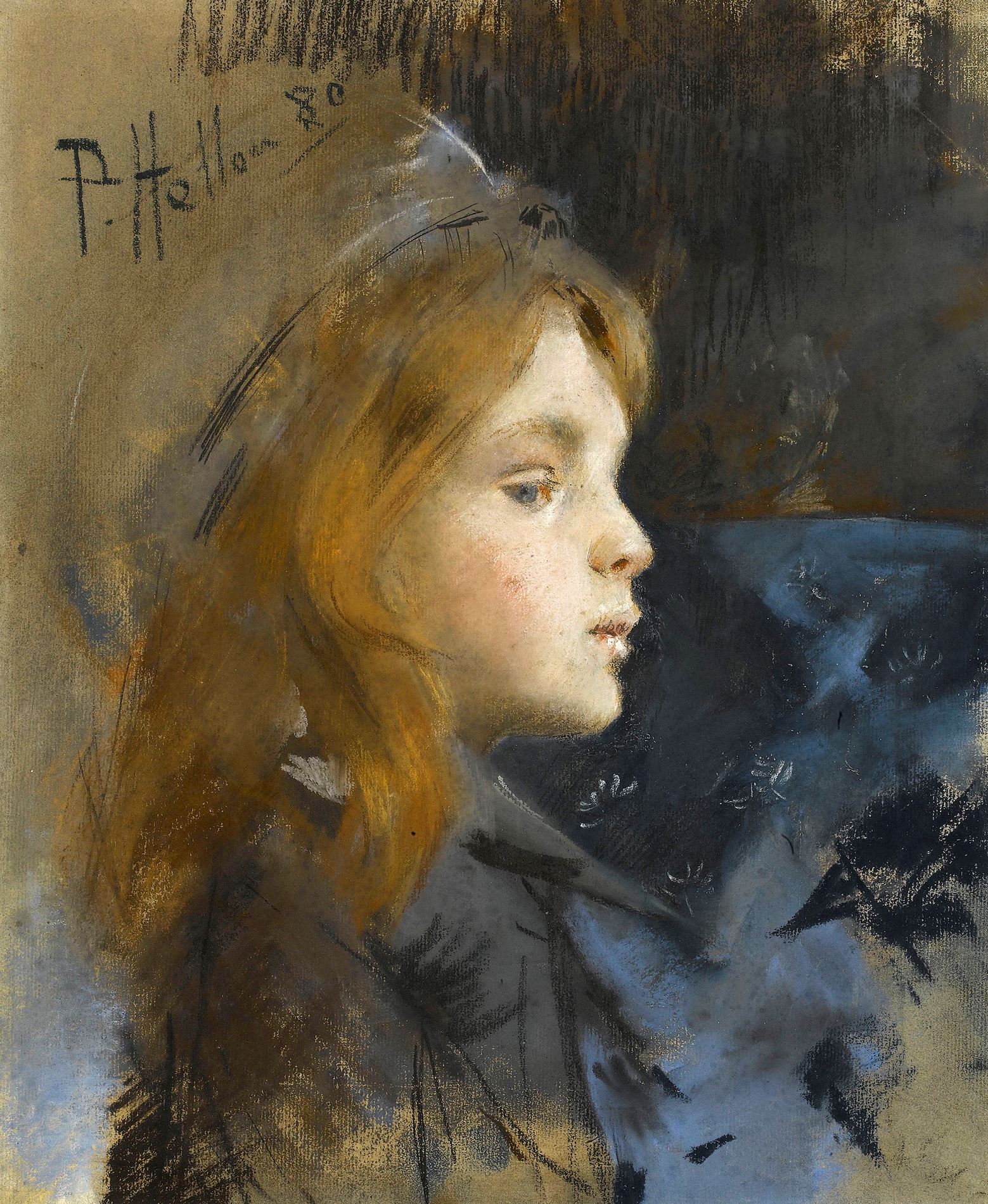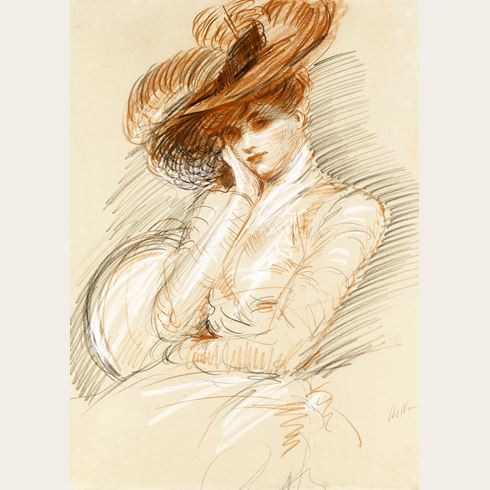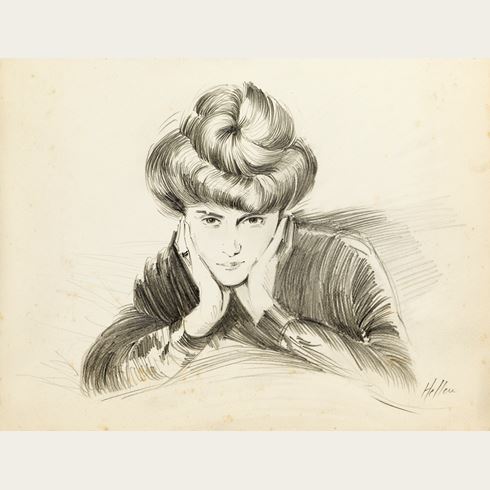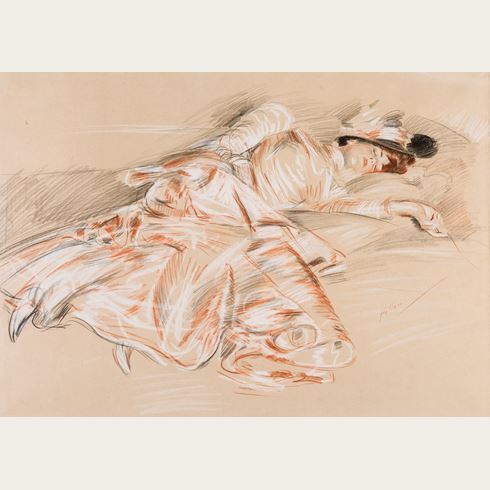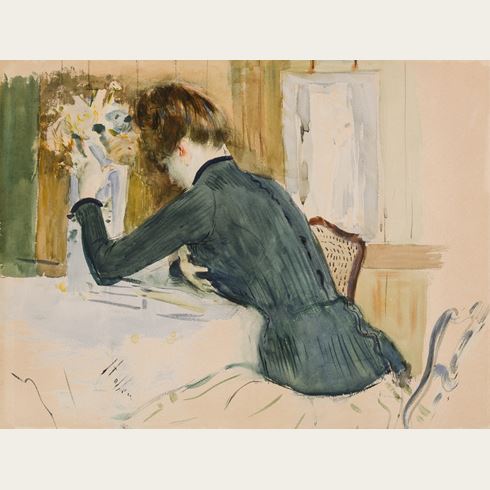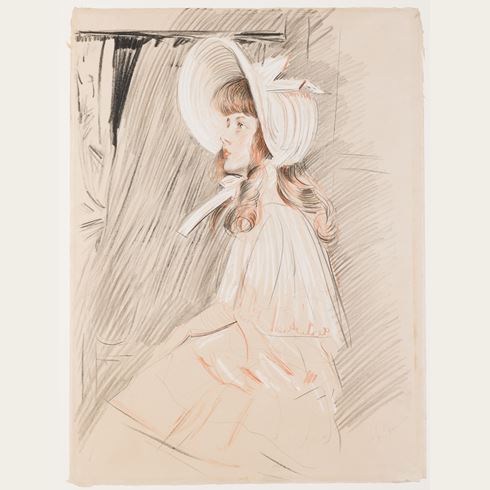Paul César HELLEU
(Vannes 1859 - Paris 1927)
Portrait of a Young Girl Wearing a Beret
A partial study of a standing male nude in black chalk on the verso.
Signed and dated P. Helleu 80 at the upper left.
405 x 327 mm.
Signed and dated 1880, the present sheet is an early work by Helleu, and demonstrates that his skill as a pastellist was already evident at the very beginning of his career. The signature is that used by the artist in the early 1880’s, while the style of the pastel is similar to that of a painting of the same year donated to Musée La Cohue in Vannes by the artist’s daughter in 1996. Helleu’s reputation was, to a large extent, established by his pastel portraits. He exhibited a number of large pastel portraits at the Salons of 1885 and 1886, where they were greatly admired, and his career was launched with a large exhibition of pastels at the Galerie Petit in 1888. Helleu continued to work in pastel throughout his career, mainly for portraits but also for floral subjects, and exhibited these works frequently at the Société des Pastellistes.
The striking red hair of the sitter in this pastel portrait is a favourite motif of the artist (the critic Félix Fénéon once noted of Helleu that ‘like M. [Albert] Besnard he delights in the prestige of red hair’), and the appearance of this young girl is in fact reminiscent of Helleu’s favourite model, his wife Alice Guérin, whom he married in 1886 when she was sixteen years old. There is indeed a strong resemblance between the girl depicted in this pastel and Helleu’s later portraits of Alice, who would have been ten years old at the time this pastel was drawn. However, the artist is not thought to have met Alice until several years later, in 1884. This is the date of the earliest known pastel portrait of her by Helleu; commissioned by her parents, M. and Mme. Louis-Guérin, it is today in the Musée Bonnat in Bayonne.
The 1890s found Helleu and his young wife Alice popular figures in polite society in both France and England, with the artist receiving numerous portrait commissions and enjoying considerable financial success. He was a gifted portraitist, and was highly regarded for his portraits of the elegant women of the beau monde of Paris, London and New York. His subjects included the Comtesse Greffulhe, Queen Alexandra and Consuelo Vanderbilt, the Duchess of Marlborough. These works were greatly admired by his contemporaries; as Edmond de Goncourt noted in a letter to the artist, written in February 1895, ‘Your work has for its inspiration that dear model who fills all your compositions with her dainty elegance. It is sort of a monograph on Woman, in all the infinite varied attitudes of her intimate home life.’
Encouraged by his friend Sargent, Helleu began travelling to America in 1902, where his reputation had preceded him, and where he achieved much success as a portrait painter (despite apparently only knowing one word of English, namely the word ‘charming’). It was in 1912, on his second visit to New York, that he completed his most public work, the vaulted ceiling of the main hall of Grand Central Station, painted with the signs of the zodiac and the stars of the Milky Way. Helleu’s later reputation, however, has rested primarily on his etched work, executed in the medium of drypoint. First introduced to the etching medium by James Tissot, Helleu produced a large number of portraits of fashionable women in this manner, for which he charged up to 1,200 francs. The popularity of these prints has, however, tended to overshadow his less numerous oil paintings and pastels. In 1931, four years after Helleu’s death, a retrospective exhibition of his work was held at the Galerie Charpentier in Paris.
Provenance
Literature
To be included in the forthcoming Helleu catalogue raisonné, in preparation by Les Amis de Paul-César Helleu.

